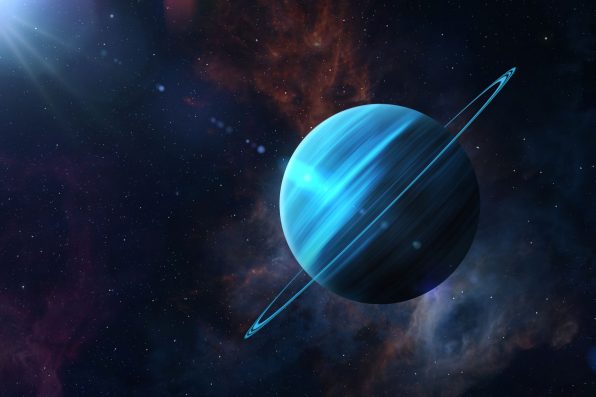It Was Unclear What Caused Violent And Unpredictable Superstorms On Uranus And Neptune, But Now Astronomers Believe Methane May Have Something To Do With Their Frequency

The planets Uranus and Neptune are the farthest away from us in the solar system, so scientists don’t really know much about these worlds.
However, they do know that Uranus and Neptune are rich in water, earning them the title of ice giants. And, in the 1980s, it was discovered that occasional massive storms occur on the two planets. The cause of these superstorms was unknown until recently.
The storms are extremely violent and unpredictable, but they don’t last long. Every few years, they appear and can be seen from Earth through a telescope.
All this information was gleaned after the Voyager 2 spacecraft flew past them about four decades ago. A team of astronomers has proposed that methane might have something to do with how frequently the storms occur.
A storm is created when heat makes its way from a planet’s warm interior to its surface. On the planet’s surface, the heated gas starts to cool down, which can lead to turbulence and trigger storm formation.
However, Uranus and Neptune’s interiors are always warm, and their surfaces are always cool. So, according to that logic, the storms should be happening all the time.
In a new study, the team noted that methane is the third-most abundant molecule in the atmospheres of both worlds. The first and second are hydrogen and helium.
Methane usually just floats around in the atmosphere, but the researchers developed a three-dimensional model to show that the compound can significantly change heat transfer within the planets in certain situations.
Methane exists as a gas under normal circumstances, but in the upper regions of Uranus and Neptune’s icy atmospheres, methane might condense and form droplets that fall to lower altitudes. Once there, the droplets will reheat and rise again in a way that is similar to the water cycle on Earth.

revers_jr – stock.adobe.com – illustrative purposes only
When the atmosphere becomes too saturated with methane, a stable layer is developed, which stops heat from rising to the surface and prevents storms from forming.
These layers are located throughout all latitudes of Neptune and the equator and mid-latitudes of Uranus.
The poles of Uranus do not have enough methane to produce a stable layer. Therefore, heat can reach the surface easily and generate larger storms. On the contrary, Neptune has more methane overall.
Occasionally, the methane can rise from the stable layer and spread through the atmosphere, allowing heat to flow and superstorms to emerge before everything stabilizes again.
More research will be needed to improve our understanding of all the chemical interactions in the atmospheres of these ice giants. It could even help further our knowledge of how planets outside of our solar system operate.
The paper was published in the preprint database arXiv.
Sign up for Chip Chick’s newsletter and get stories like this delivered to your inbox.
More About:News